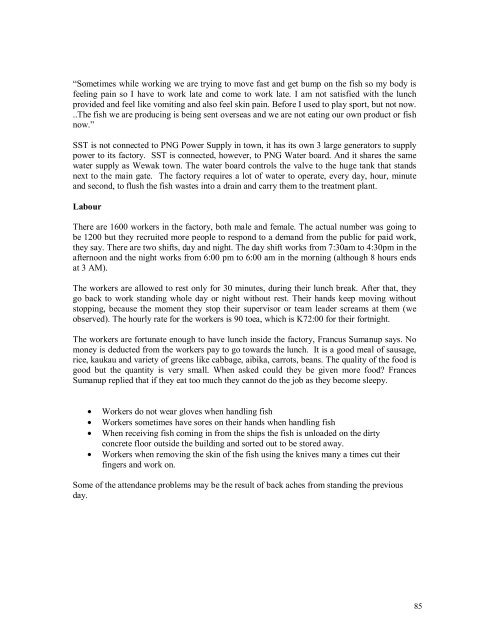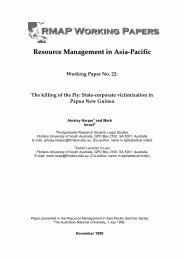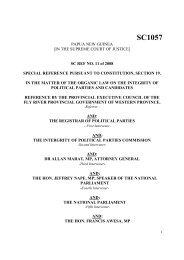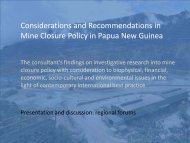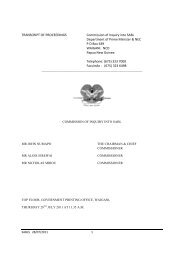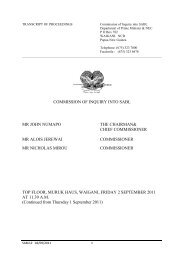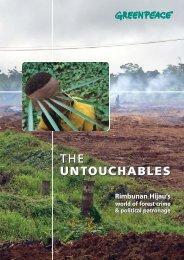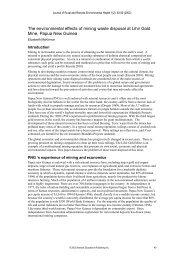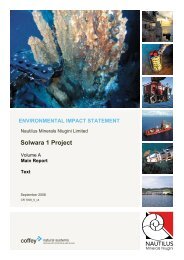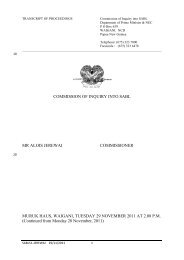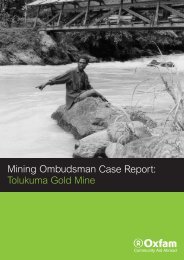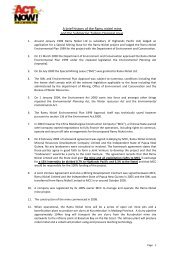Fishy business. The Social Impact of SST.pdf - Act Now!
Fishy business. The Social Impact of SST.pdf - Act Now!
Fishy business. The Social Impact of SST.pdf - Act Now!
Create successful ePaper yourself
Turn your PDF publications into a flip-book with our unique Google optimized e-Paper software.
“Sometimes while working we are trying to move fast and get bump on the fish so my body isfeeling pain so I have to work late and come to work late. I am not satisfied with the lunchprovided and feel like vomiting and also feel skin pain. Before I used to play sport, but not now...<strong>The</strong> fish we are producing is being sent overseas and we are not eating our own product or fishnow.”<strong>SST</strong> is not connected to PNG Power Supply in town, it has its own 3 large generators to supplypower to its factory. <strong>SST</strong> is connected, however, to PNG Water board. And it shares the samewater supply as Wewak town. <strong>The</strong> water board controls the valve to the huge tank that standsnext to the main gate. <strong>The</strong> factory requires a lot <strong>of</strong> water to operate, every day, hour, minuteand second, to flush the fish wastes into a drain and carry them to the treatment plant.Labour<strong>The</strong>re are 1600 workers in the factory, both male and female. <strong>The</strong> actual number was going tobe 1200 but they recruited more people to respond to a demand from the public for paid work,they say. <strong>The</strong>re are two shifts, day and night. <strong>The</strong> day shift works from 7:30am to 4:30pm in theafternoon and the night works from 6:00 pm to 6:00 am in the morning (although 8 hours endsat 3 AM).<strong>The</strong> workers are allowed to rest only for 30 minutes, during their lunch break. After that, theygo back to work standing whole day or night without rest. <strong>The</strong>ir hands keep moving withoutstopping, because the moment they stop their supervisor or team leader screams at them (weobserved). <strong>The</strong> hourly rate for the workers is 90 toea, which is K72:00 for their fortnight.<strong>The</strong> workers are fortunate enough to have lunch inside the factory, Francus Sumanup says. Nomoney is deducted from the workers pay to go towards the lunch. It is a good meal <strong>of</strong> sausage,rice, kaukau and variety <strong>of</strong> greens like cabbage, aibika, carrots, beans. <strong>The</strong> quality <strong>of</strong> the food isgood but the quantity is very small. When asked could they be given more food? FrancesSumanup replied that if they eat too much they cannot do the job as they become sleepy.• Workers do not wear gloves when handling fish• Workers sometimes have sores on their hands when handling fish• When receiving fish coming in from the ships the fish is unloaded on the dirtyconcrete floor outside the building and sorted out to be stored away.• Workers when removing the skin <strong>of</strong> the fish using the knives many a times cut theirfingers and work on.Some <strong>of</strong> the attendance problems may be the result <strong>of</strong> back aches from standing the previousday.85


